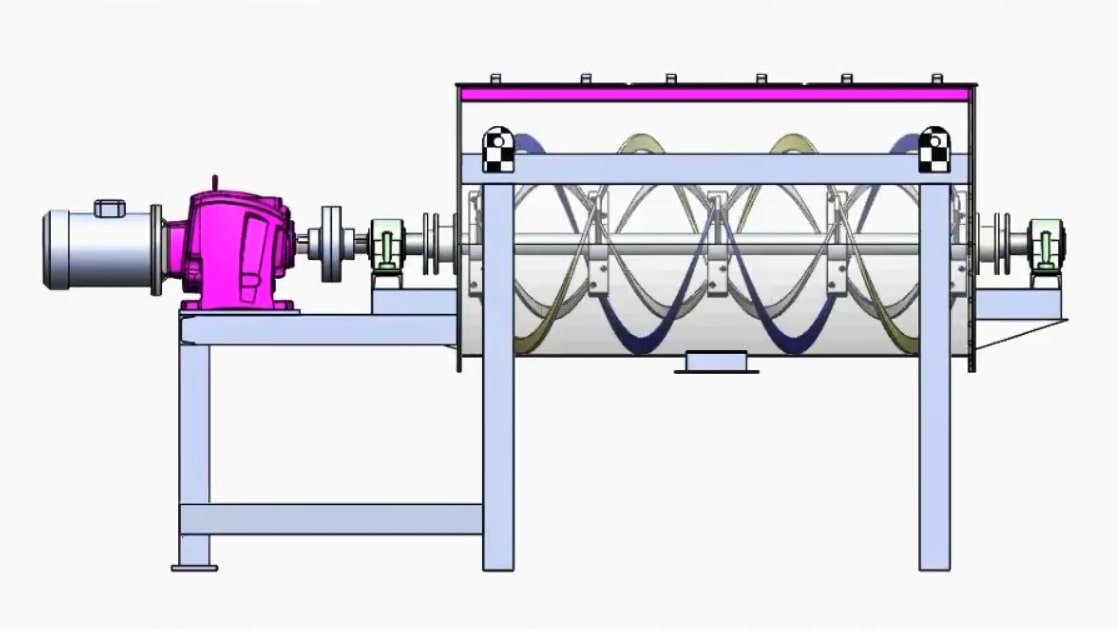Principle Ribbon blender
The mechanism of the Ribbon blender for mixing is shear. Shear is transferred to the powder bed by moving blades (ribbon-shaped) in a fixed (non-movable) shell. High shear rates are effective in breaking lumps and aggregates. Convective mixing also occurs as the powder bed is lifted and allowed to cascade to the bottom of the container. An equilibrium. state of mixing can be achieved.
Construction of the Ribbon blender
The construction of a ribbon blender is shown in Figure 1. It consists of a non-movable horizontal cylindrical trough (shell) usually open at the top. It is fitted with two helical blades, which are mounted on the same shaft through the long axis of the trough. The blades have both right and left-hand twists. The blades are connected to a fixed-speed drive. The ribbon blender is top-loading with a bottom discharge spout. The trough can be closed with a lid.

Working
Through the fixed-speed drive, ribbons are allowed to rotate. One blade moves the solids slowly in one direction and the other moves them quickly in opposite direction. Different powders are introduced from the top of the trough. The body is covered because considerable dust may be evolved during dry blending and granulating solution may evaporate during wet granulation.
The powders are lifted by a centrally located vertical screw and allowed to cascade to the bottom of the container (tumbling action). The counteracting blades set up high shear and are effective in breaking up lumps or aggregates. Helical blades move the powders from one end to another as shown in Figure 1. The final stage of the mix represents an equilibrium state. The operating conditions of a given mixer can markedly affect the steady-state and thus the quality of the mixing. The blend is discharged from the bottom opening.
Uses: A ribbon blender is used to mix finely divided solids, wet solid mass, and sticky and plastic solids. Uniform size and density material can be easily mixed. It is used for liquid-solid and solid-solid mixing.
Advantages: High shear can be applied using perforated baffles, which bring about rubbing and breaking of aggregates. Headroom requirement is less.
Disadvantages:
- It is a poor mixer because the movement of particles is two-dimensional.
- Shearing action is less than in planetary mixer.
- Dead spots (areas that remain unmixed) are observed in the mixer, though they are minimum.
- It is having fixed-speed drive.
Make sure you also check our other amazing Article on : Twin Shell Blender
